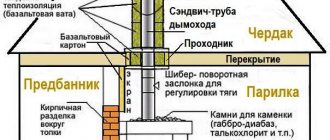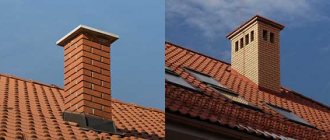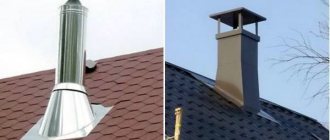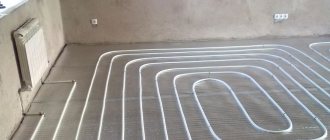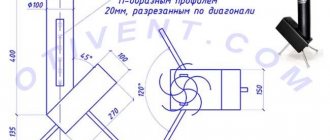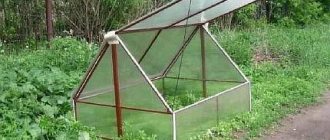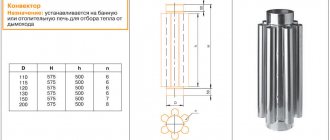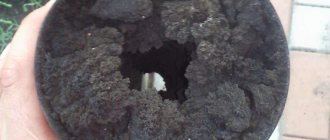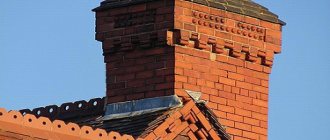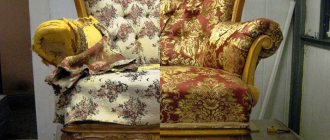What is a chimney and how does it work
The chimney is one of the main components of your heating device, be it an old brick stove or an ultra-modern gas boiler. Your safety and budget depend on the free passage of flue gases through the chimney: with a well-designed and constructed chimney, the stove consumes much less fuel. Previously, chimneys were built by professional stove builders. Current technologies make it easy to do this yourself. Of course, you need to study the issue and carefully follow the drawing and manufacturing procedure.
Calculation of the required cross-section and height of the pipe
To ensure good aerodynamics and adequate traction, it is necessary to comply with the rules prescribed in the relevant SNiP. They regulate the standards for the height and diameter of the pipe section for chimneys.
The height of the pipe depends on the type of roof. Its minimum possible value is 5 m, if measured from the heating device to the head. In addition, it is necessary to calculate the height of the part of the pipe protruding above the roof.
Above a flat roof, the pipe must rise no less than 50 cm. If the roof has a slope, the height of the pipe depends on its location in relation to the ridge of the roof. The location options are as follows:
- Up to 1.5 m from the ridge. In this case, the recommended pipe height is 50 cm higher than the most protruding part of the roof.
- From 1.5 to 3 m from the ridge. With this arrangement, the head should form a straight horizontal line with the roof ridge.
- More than 3m. In this case, the height of the protruding part of the pipe should be such that the angle between the ridge and the head is 10°. In this case, the pipe is located below the ridge.
Special formulas have been invented to calculate the cross section. They are very complex and to use them you need to know how much fuel is burned per hour of operation of the device, what the inlet and outlet temperatures are, as well as the coefficient for each type of fuel. To simplify the task of calculating the pipe cross-section, simplified rules are used:
- For devices with a power of less than 3500 W, the pipe cross-section must be at least 140 mm x 140 mm.
- For devices with a power from 3500 to 5000 W, the cross-section must be at least 140 mm x 200 mm.
- For devices with power from 5000 W to 7000 W - 140 mm x 270 mm.
We recommend that you read: Repair and replacement of damaged sections of polypropylene pipes
What materials are they made from?
Chimneys are made of bricks or pipes; the latter are divided into chimneys made of stainless steel, iron sheet, asbestos-cement, fireclay, glass. Let's look at their design, advantages and disadvantages, and the ability to maintain even traction without jumps.
Brick
The most traditional of all. Advantages: durability; powerful thermal inertia: they immediately provide good traction, and when warming up, they adapt to the operation of the stove; will never give reverse thrust or its pulsation. Disadvantages: unsuitable for boilers, may result in burner flame failure and accident; a rectangular cross-section gives an uneven flow of gases, combustion products settle more strongly; difficult to build and repair; require a foundation due to heavy weight.
Ancient brick pipe with sleeve
Pipes
This is a much more practical type of chimney that can be used in all cases. Depending on the material, the pipes are different.
Asbestos cement pipes
Advantages: round; lungs; cheap; easy to install. Disadvantages: low heat resistance (used for furnaces with low flue gas temperatures, up to 3000); it is difficult to make a curved structure (rubber couplings are a bad solution); porous structure; rapid contamination by soot and, as a consequence, the possibility of its ignition.
Asbestos cement pipes in a stack
Ceramic
They consist of several parts: a chimney made of refractory ceramics, thermal insulation and a concrete body. Advantages: durable; round and smooth inside, so no need to clean them; have thermal insulation and tightness, fire resistance and heat resistance; easy to install; Suitable for any boilers, stoves, fireplaces. Disadvantage: expensive, difficult to repair and difficult to connect into a curved structure.
Ceramic pipe assemblies
Glass
Advantages: even more chemically neutral and even smoother than ceramic; durable. Disadvantages: expensive (100 times more expensive than steel); the rest are the same.
Fragment and chimney made of Schott glass - Rohrglas
Polymer
Are used only for sleeves. Advantages: easy to install, lightweight, flexible, cheap, durable. Disadvantages: fragile and cannot withstand high temperatures.
Polymer chimneys for fireplaces FuranFlex RVW
Lining is the insertion into an old, usually brick, chimney pipe of a liner in the form of a polymer, flexible metal corrugated or metal pipe for the restoration of the chimney.
Lining of brick chimneys with FuranFlex RVW polymer pipes
Steel
Steel chimneys are optimal in terms of price, quality, and ease of installation.
Types of steel structures
There are two main types of chimneys according to their orientation relative to the heating device: straight (attached) and side (attached).
Straight chimneys
They are placed above the heating device, indoors and pass through the internal ceilings and through the roof. Most often, this is the best solution specifically for stoves. Advantages:
- Acid condensation does not fall out, or falls out only slightly, but the ease of passage of gases through a straight chimney is important.
- Less soot deposits, easy to clean yourself, and therefore less fire hazard.
- Works well without a gate draft regulator.
- Only the pipe on the roof is visible on the house, this is aesthetically pleasing.
Flaws:
- Passing through floors and roofs is more difficult than through a wall.
- Large unevenness of thrust, pulsating and even reverse thrust during gusts of wind. Therefore, for modern boilers with an emergency shutdown device, such a chimney is not suitable, even if equipped with a complex deflector.
A straight chimney passes through the ceilings and roof
Side tie-downs
The axis of such a structure does not coincide with the axis of the heating device. Advantages:
- Installation outside the house with a single passage through the wall.
- Ease of construction.
- The presence of a container for collecting acid condensate, completely eliminating its flow into the heating device.
- Even with the simplest fungus it works stably in strong winds, and if a deflector is mounted on it, the draft will always be direct and stable.
- Makes it possible to precisely regulate thrust due to low thermal inertia. This will always ensure optimal fuel consumption.
Flaws:
- In cold weather, condensation can turn into ice and burst the container. The container may freeze up to the tee, which will block the draft. Hence the need to place a container for condensate inside the house.
- The place through which the chimney exits to the outside is designed as a passage unit. But in winter, the unit absorbs moisture from the air, and the insulation can cake and settle. Then thermal stress will accumulate in the upper part of the assembly, which can cause a serious crack in the wall.
- The weight of a chimney, unlike an attached one, lies on the passage unit; this can also affect the insulation and cause the phenomena described above.
- Cleaning is quite difficult due to the bends of the chimney. A specialist is required.
A side, or attached, chimney runs along the outer wall of the house
Lateral internal
However, side chimneys can be located both inside the house and in the thickness of the wall, then contact with the roof cannot be avoided.
The difference in attached chimneys - outside and in the wall
No one type of chimney can definitely be called the best. Each of them is good in its place and depends on the conditions: type of heating device, roof structure and floor beams, wall material and type of chimney (single-wall or sandwich). The advantage of the attached side chimney is that in this case there is no need to go through the roof. But it is completely excluded in the case of single-wall pipes due to the cold in winter.
Advantages and disadvantages of such a pipe
Galvanization is primarily steel, a material that has many undeniable advantages.
These include:
- Strength;
- Ability to withstand high temperatures;
- Excellent thermal conductivity;
- Low cost compared to other materials.
But without a protective coating, ferrous metal is susceptible to corrosion, quickly rusts and becomes unusable. Galvanizing successfully solved this problem. And, despite the fact that galvanized and steel pipes are the same in shape, the galvanized product has a number of advantages.
Additional advantages of galvanized products:
- Corrosion resistance, the ability to withstand negative environmental influences;
- Increased service life;
- Increased strength;
- Wide operating temperature range;
- High resistance to mechanical stress;
- Galvanized pipe can withstand high internal and external pressure;
- Simplicity and ease of installation;
- High resistance to fire;
- Zinc kills all pathogenic microorganisms;
- Galvanization is practically not inferior in quality to low-alloy stainless steel, but costs an order of magnitude less.
But, like any engineering solution, a galvanized iron pipeline is not ideal.
- Not very attractive design;
- Expensive compared to conventional steel;
- Zinc complicates the welding process;
- Unlike plastic, if there are protrusions on the walls, it is almost impossible to ensure a smooth transition into structures made of galvanized pipes.
Types of materials
Steel chimneys are made of black steel, low-alloy steel and galvanized iron
Black steel
This is a simple carbon steel without alloying additives. Advantages:
- The cheapest
- Low contamination with soot and easy to clean
- In terms of installation qualities - exactly like steel
- Does not require a foundation for installation.
Flaws:
- High thermal conductivity leads to the fact that the gases quickly cool down and a lot of condensate is formed, which must be removed
- Pipes get very hot, so they require special structures where they pass through walls and roofs
- It is impossible to make an external chimney due to lack of thermal insulation
- In terms of durability, it is much inferior to a steel pipe (service life is only about five years), as it is subject to severe corrosion
- It has low heat resistance - it burns out quickly in high-temperature flue gases.
Black steel chimney parts
Attention! To increase the service life of a black steel chimney, you need to make a minimum number of joints and use thick-walled pipes.
Low alloy steel
It belongs to ferrous metals, but it contains additives of nickel, chromium and molybdenum in quantities equal to those in stainless steel. Advantages and applications: the same as for pipes made of black steel, but low-alloy steel corrodes more slowly.
Galvanized iron
This is the worst of the three previous options. The zinc layer burns out very quickly, and the thin, unprotected iron begins to corrode and collapse.
Galvanized iron pipe is the worst of all options
Stainless steel
Stainless steel is heat-resistant and resistant to acids - combustion products. Such chimneys are durable and strong; resistant to temperature changes, corrosion, condensation; inexpensive, easy to assemble due to its modularity, which allows you to build a system of any complexity; easy to repair; smooth inside, so soot does not settle, and the chimney requires almost no cleaning; They have a low heat capacity, so heating any stove is easy: a stable draft immediately appears. They also come in several types, depending on the alloy of the steel used for the pipe and the design.
Corrugated steel pipes
These flexible metal pipes are made from steel strip and are used for sleeving only. Their service life is limited due to the uneven surface, on which combustion products deposit more strongly: soot, acids.
Corrugated metal pipes - used only for lining brick pipes
Single wall stainless steel pipes
Their wall thickness is usually from 0.6 to 1 millimeter. The advantages are the same as all non-corrugated metal pipes, but these are much more durable than others. The disadvantages are the same as those of non-corrugated metal pipes.
Details of a single-circuit steel chimney
Stainless steel sandwich pipes
The disadvantages of single-wall pipes can be eliminated by a simple design improvement: the manufacture of an insulated steel pipe, or a sandwich chimney. Their advantages:
- Thermal inertia is greater than that of single-wall pipes - flue gases pass quickly, but cool slowly, so little soot and aggressive condensate are formed
- When passing through floors and roofs, there is no need for overly complex thermal insulation units, since such chimneys heat up less
- External installation, without passing through the roof, is possible
- Installation is generally quite easy
Flaws:
- Sandwich pipes are noticeably more expensive than single pipes
- Completely unsuitable for brick kilns. A stove with such a chimney will produce reverse draft during gusts of wind.
But since people are now concerned about the efficiency of their heating devices and traditional stoves are rare, sandwich chimneys have become widespread.
Stainless steel sandwich pipes
Advantages of a steel chimney pipe
Chimney pipes are made of metal, ceramics and brick. Metal pipes are currently in greatest demand. Of all the varieties of this material, it is recommended to choose steel. Steel pipes for chimneys are coated with special solutions that make the material resistant to all adverse effects of the internal environment of the chimney.
When choosing a pipe, it is necessary to take into account the parameters of the heating devices and the fuel used. The material from which the pipes are made must withstand higher temperatures than the fuel can create.
When using some types of heating devices, chemically active substances are found among the under-oxidized combustion products. They can damage a chimney that is not sufficiently resistant to chemicals. Some unburned particles can ignite, creating sparks. Therefore, the material from which the pipe is made must be fireproof.
This is interesting! When choosing a pipe, you need to pay attention to the melting point of the material from which it is made. The melting point of steel exceeds 1000 0C - the highest possible indicator encountered when operating heating appliances powered by coal.
The advantages of steel pipes are:
- Easy to install. Steel pipes do not require the installation of a special foundation; they do not require complex engineering solutions or special installation tools. You can install them yourself without prior preparation. Due to the plasticity of the material, complex technical structures can be created.
- Light weight. They are easy to transport, you can lift and move them yourself without a team of workers, which also simplifies installation.
- High temperature resistance. Steel products are suitable for appliances operating on any fuel. They do not melt at maximum temperature loads.
- Chemical inertness. Steel does not interact with chemical reagents that can form as under-oxidized combustion products. These substances are not capable of destroying it.
- Corrosion resistance. This advantage applies to pipes that have a special coating and stainless steel. The material itself quickly corrodes. It is worth considering that in addition to the internal environment, the chimney pipe is affected by external unfavorable factors, for example, precipitation. Preference should be given to coated pipes.
- Smooth inner walls. Combustion products settle on the rough surface, turning into soot, which gradually reduces the clearance. This reduces the draft in the chimney. Steel is completely smooth, the risk of soot settling on their surface is minimal.
We recommend that you read: Review of fittings for installing copper pipes
The design of a double-layer chimney and its distinctive features
This is a structure of two steel pipes inserted into each other, different in diameter. The outer one is called the casing. A pyre-resistant insulation is placed between the pipes, usually basalt wool (laid so that the fibers are oriented along the pipe) 30–35 millimeters thick, capable of withstanding heat of a thousand degrees. Mineral wool is completely unsuitable.
Sandwich chimney parts
Features of using sandwich pipes for baths
Since a bathhouse, as a rule, is built of wood (and if it is made of foam blocks, then it is lined with flammable material), issues of thermal insulation become of particular importance. It is prohibited to use single-layer chimneys for bathhouses - only brick and sandwich chimneys are allowed. All distances from the chimney to flammable objects must be carefully verified and observed in accordance with SNiP. All pyrohazardous surfaces must be insulated with vermiculite or asbestos. It is forbidden to install a deflector on a sauna chimney due to its strong windage. The distance from the chimney to the wall is at least 25 centimeters!
Caution: under no circumstances should a sauna ventilation system be combined with a chimney.
Operation, repair and cleaning
You have received a chimney that will serve you for fifteen years. But you need to follow the simplest rules. It is impossible to replace a boiler or furnace so that the temperature of the flue gases is higher than that calculated specifically for this chimney. It is necessary to monitor the condition of the heat-insulating substance in the wall opening and trouble-free drainage of condensate.
Sandwich chimneys on a brick wall
Such a chimney needs to be cleaned approximately once every three months, but it is better not to use a mechanical method at all. In severe cases, you need to call specialists. And your destiny is chemical cleaning. This is a substance in the form of a briquette or powder, which, when burned in the firebox of a boiler or stove, releases chemicals that dissolve soot and other deposits in the chimney.
Chimney sweep powder for cleaning chimneys
Calculation of chimney parameters
The basis for calculating the height and diameter of the chimney is the power indicator.
The performance of a boiler or furnace is directly affected by the height of the chimney. For household appliances it is 5 m. This characteristic is provided for by the SNiP requirements for stoves in residential buildings. The measurement is taken from the device's grate to the hood. At a lower altitude, the natural draft in the stove will not ensure efficient combustion of fuel; it will smoke and not produce the optimal amount of heat. However, the ability to increase height is limited. Experiencing the natural resistance of the pipe walls, the air will slow down if the channel is too long, which will also lead to a decrease in draft.
Rules for selecting chimney length
For a private house, calculating the height of the chimney is based on certain rules:
- The pipe must be at least 5 m.
- The excess of the chimney end above a conventionally flat roof is at least 50 cm.
- For a pitched roof, a pipe whose axis is located no further than 1.5 m from the ridge, and if there are superstructures, then from their highest point, the excess is 0.5 m.
- When the distance to the ridge is 1.5–3.0 m, the end of the pipe should be no lower than the level of the ridge.
- When installing a chimney at a distance of more than 3 m from the ridge, in particular for outdoor installation, the angle between the horizon level and the conventional straight line between the ridge and the end of the pipe must be at least 10 degrees.
The height of the pipe depends on its location
When choosing a location for the chimney outlet through the roof, it should be taken into account that it should not be located near roof windows and other similar devices in order to avoid creating fire hazards.
Calculation of the chimney cross-section
The procedure given below for determining the size of the channel is valid for a circular cross-section. It is the optimal form, since the flue gases do not move in a monolithic straight stream, but the flow swirls and they move in a spiral. In rectangular channels, vortices are formed at the corners, inhibiting the movement of gases. To calculate the cross-sectional value, the obtained result should be multiplied by 1.5.
You will need the following initial data:
- Furnace power, that is, the amount of heat generated by the device per unit time when fully loaded.
- The temperature of the flue gases at the outlet of the furnace is usually taken to be within 150–200 degrees.
- The speed of gas movement through the channel (is 2 m/sec).
- Chimney height.
- The value of natural draft (4 MPa per 1 m of smoke channel).
The dependence of the cross-sectional area of the chimney on the volume of fuel burned is obvious.
Smoke doesn't move in a straight line
To perform the calculation, you need to use the converted formula for the area of a circle: D2 = 4 x S * Pi, where D is the diameter of the smoke channel, S is the cross-sectional area, Pi is the number pi equal to 3.14.
To calculate the cross-sectional area, you need to determine the gas volume at the point where they exit from the stove into the chimney. This value is calculated depending on the volume of fuel burned and is determined from the ratio Vgas = B x Vtop x (1 + t / 273)/ 3600, where Vgas is the volume of gases, B is the amount of fuel burned, Vtop is a tabular coefficient that can be found in GOST 2127, t - temperature of gases at the outlet of the furnace, usually a value within 150–200 degrees is accepted.
The cross-sectional area is determined by the ratio of the volume of passing gases to the speed of its movement, that is, by the formula S = Vgas/W. In the final version, the desired value is determined by the relation D2 = Vgasx4/PihW.
Having made the necessary calculations, you will get the result - the diameter of the chimney should be 17 cm. This ratio is valid for a stove in which 10 kg of fuel burns per hour with a humidity of 25%.
The calculation is made for cases where non-standard heating units are used. If the power of the device is known, it is enough to use the chimney parameters recommended by experts:
- for devices with power up to 3.5 kW - 140 x 140 mm;
- at 3.5–5.0 kW - 140 x 200 mm;
- with a power of 5.0–70 kV - 200 x 270 mm.
For chimneys with a round cross-section, its area should not be less than the calculated size of a rectangular one.
